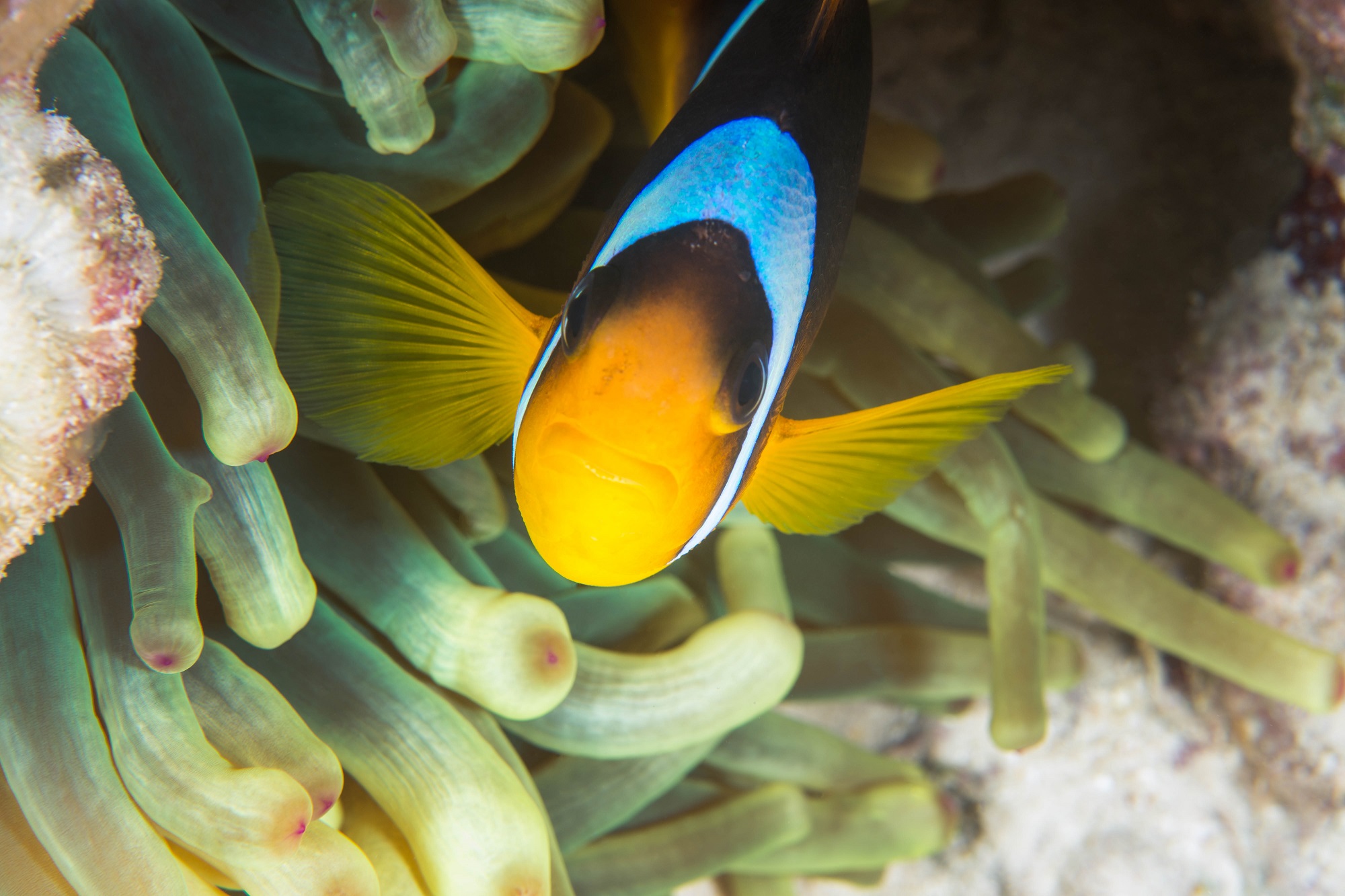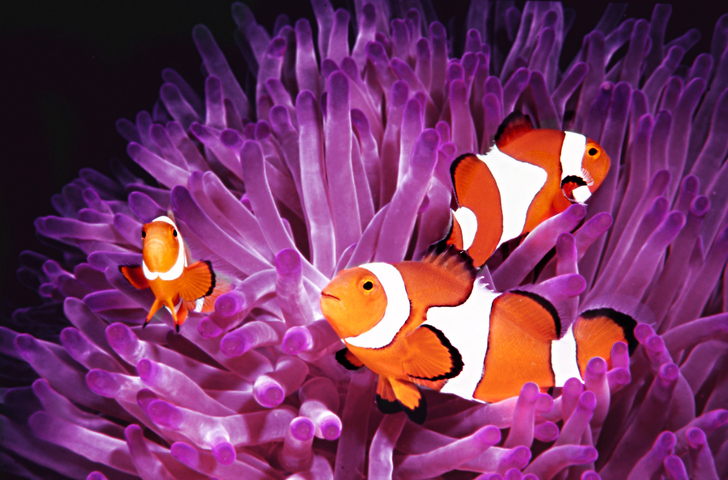
Loved by children and adults alike, the oh-so-cute clownfish (Amphiprioninae) is, naturally, one of the most popular species on display here at Blue Planet Aquarium.
That’s right: it may be small, but the clownfish draws quite the crowd. Even before the release of Finding Nemo way back in 2003, this pint-sized tropical fish was a super popular aquarium species, but now, it’s easily one of the most recognisable fish in any professional or home aquaria.
So, aside from its obvious fame, what do you need to know about the lovable clownfish ahead of your visit to our Coral Cave exhibit? Our experts are here with all the need-to-know facts and stats.
Type
Fish
What do they eat?
Zooplankton, algae, worms and small crustaceans
Size
Up to 11cm
Water Type
Tropical Marine
Where are we?
Indian Ocean, the Red Sea, and the western Pacific
See Us At
Coral CaveWhat are clownfish like?
Did you know that there are actually 30 unique species of clownfish (or anemonefish as they’re also known), all belonging to the Amphiprioninae family?
Surprised? Many of our visitors are too. Most people assume that all clownfish are bright orange and white, but this isn’t the case.
In fact, a clownfish’s colours depend on where they live. While most are, indeed, orange and white, there are other variations, including black and white and solid orange with no stripes.
Regardless of their colour, one thing’s for certain: they sure are small fish! Growing to an average size of just 11cm, there’s no wonder these colourful little swimmers prefer staying close to their coral reef homes, and not venturing too far into the big, bad ocean.
Habitat of a clownfish
As you’ve probably gathered, clownfish are tropical fish, preferring the warm waters in the Indian Ocean, the Red Sea, and the western Pacific. They typically live in shallow tropical waters, among the anemones and coral of the world’s invaluable reef systems.
Speaking of anemones, these predatory marine invertebrates are key to the success and survival of the humble clownfish. One mating pair of clownfish will live within the protection of a stinging anemone within a coral reef system, where both the fish and the invertebrate protect one another from predators while benefiting from a source of food, nutrients and shelter.
Although stinging anemones are a deterrent for many tropical species, it’s thought that the mucus on the clownfish protects it from the anemone’s sting. They also provide one another with a reliable food source, with the anemone digesting the clownfish’s excrement and them eating dead tentacles.
What do clownfish eat?
As appetising as they might sound, dead anemone tentacles aren’t the only thing on the menu. These charming little guys are omnivores and are known to chomp their way through everything from zooplankton and algae to worms and small crustaceans.
That’s a good thing, too, because coral reefs need all the help they can get in staying clean and healthy. Like other animals that live among reefs, clownfish are vital to the long-term health and survival of coral systems, removing bacteria-causing matter that would otherwise risk disease and the decline of the entire reef ecosystem.
Hierarchical sex change: The clownfish’s unusual party piece
One interesting fact that few people know is their ability to change sex hierarchically. Confused? Allow us to explain…
Clownfish form breeding pairs consisting of one female and one large dominant male. Every clownfish is born as a juvenile male and will remain that way until they are required to step up within their hierarchy.
If the one and only female dies, the large dominant male will transform into the next female and the largest juvenile male will grow to become the next large, dominant male. This makes them a sequential hermaphrodite.
When they reproduce, the one and only female clownfish will lay hundreds if not thousands of eggs, and the dominant male will protect them until they hatch 6-10 days later. Fascinating stuff, right?
Where can you find us?
Clownfish are sure to be on your must-see list when visiting Blue Planet Aquarium, so knowing where to find them is important. Our clutch of clownfish is on display in Coral Cave, a specially adapted tropical aquarium exhibit that mimics the conditions of an Indo-Pacific coral reef ecosystem.
Ready to meet our clownfish? Book your tickets to Blue Planet Aquarium today!

